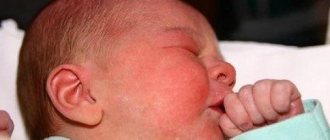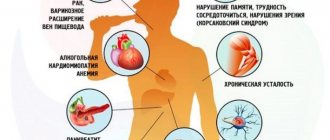Article:
A child with autism spectrum disorder forces parents to seek and test all possible treatments.
Priority is often given to new techniques, the effects of which have not always been sufficiently studied. One of the latest developments in therapeutic effects on the brain is micropolarization. There are many reviews from parents and specialists about the effect of treatment on the brain function of a child with autism. Often they are directly opposite in nature. So what is brain micropolarization and how does it treat autism?
Micropolarization - what is it?
Micropolarization of the brain is the effect of a low-frequency electric current of low strength on it. The treatment was developed to correct organic brain lesions in previously intact patients. Electrical exposure is carried out during the rehabilitation period after injuries or stroke.
In children, micropolarization of the brain for autism and delayed speech development has recently begun to be used. As an official technique, it is carried out at the Bekhterev Institute.
There are:
- Transcranial treatment. Here, electric shock is applied directly to the child’s brain.
- Transvertebral impact. Electric current affects the brain indirectly, stimulating the spinal cord.
How is micropolarization done? Electrodes are connected to the patient (on the head or back area) for 10 to 50 minutes (the time is increased gradually with each session). The baby can play or relax. Exposure to electric current does not cause any discomfort, since its strength is comparable to natural impulses.
The course of treatment is 10-12 sessions, the time of which is increased progressively. It is believed that the treatment has a delayed effect, so it can be assessed after 2-3 months. Repeated micropolarization of the brain in autism is allowed to be carried out no earlier than after 6 months. This time is necessary for an objective assessment of the effect of therapy on the child’s development.
What is brain micropolarization?
Modern medicine knows an incredible amount about the principles of functioning of the human body. The nervous system can be called the least studied. At the same time, the whole life and success in most areas depends on how correctly its development proceeds. It is necessary to carefully monitor its formation in the child. Some problems arising in this area can be overcome using the micropolarization method... Read more
What is the effect of TCMP and TVMP on the body?
Micropolarization has a modulating effect on neurodynamic processes, which are based on changes in the level of polarization of the cell and synaptic membrane. Micropolarization using a weak direct current comparable to the biopotentials of neurons is used for a targeted and controlled effect on the level of excitability of nervous tissue. Not only cell membranes are polarized, but also intra- and extracellular fluid, which significantly facilitates interactions between neurons and the transmission of nerve impulses... Read more
Indications for micropolarization for children
The effectiveness of this technology is quite high. It can be used when there are indications of a very different nature. For example, micropolarization allows you to cope with the consequences of strokes or brain injuries. But when it comes to its use for children, the indications are usually not so serious. Among the main childhood problems that micropolarization can cope with are the following... Read more
General indications for micropolarization for adults
Diseases for which micropolarization can be used as therapy: traumatic brain injuries (including crush injuries) and vascular diseases of the brain in the acute period, starting 1-2 days after a cerebral accident, as well as their consequences (vegetative status syndrome ", hemiparesis, paraparesis, ataxia, aphasia, alalia, etc.); consequences of neuroinfectious diseases of the brain and spinal cord; — consequences of injuries to the spinal cord and spine, including the consequences of surgery; psycho-emotional… Read more
Contraindications to brain micropolarization for children and adults
Health must be taken very seriously. Therefore, if even minimal contraindications are found, it is better to refuse to perform such procedures. Contraindications to micropolarization are: foci of infection in the body or colds in the acute stage; neoplasms, including benign ones; blood diseases of a systemic and chronic nature; metal or any other foreign objects in the child’s body; hypertension, atherosclerosis, other serious vascular or heart diseases; lesions of the scalp in the places where the electrodes are installed; intolerance to currents.
How is the micropolarization procedure performed?
The duration of the procedure is 30-40 minutes, and the child does not experience any pain. During the procedure, you can draw, watch cartoons, and study. Children tolerate the procedures well because, in terms of their characteristics, the effect on nervous tissue of a weak direct current can be comparable to physiological processes in brain cells. It is impossible to predict exactly how a child will react to micropolarization. Therefore, the first therapy sessions require constant monitoring by specialists and parents.
When is the effect of therapy visible?
TCMP procedures are not carried out in conjunction with drug (nootropic) therapy, but can replace it. A positive effect is sometimes noted already during the procedures, but in most cases it becomes noticeable after 2-3 months. It is advisable to repeat this treatment no earlier than after 3-6 months, since there is a long-lasting aftereffect. Positive changes in the electroencephalogram are noted earlier than clinical ones and are almost always detected after a course of treatment. EEG changes indicate an increase in the functional maturity of the bioelectrical processes of the brain.
Micropolarization – benefit or harm?
It is considered proven that micropolarization of the brain during speech delay has a positive effect, stimulating and strengthening synaptic connections. In the case of autism, the causes of which are themselves poorly understood, micropolarization is recommended as a method to “try.”
Note! There is no official evidence of the effectiveness of micropolarization for the treatment of autism. The promotion of the method is based on the hypothetical benefits and positive experience in the rehabilitation of adult patients with speech and motor disorders.
It is officially believed that exposure to a weak current for short sessions cannot cause any harm. However, there are conditions in which such treatment cannot be carried out.
Contraindications
Micropolarization is contraindicated in case of individual sensitivity to the action of electrical impulses.
Electrical treatment is not carried out:
- for dermatological diseases localized at the site where the electrodes are attached;
- with increased excitability of patients;
- children with autism who are prone to hysterical reactions;
- patients who have vascular pathologies;
- patients with neoplasms;
- simultaneously with taking psychotropic medications;
- simultaneously with a course of other physiotherapy procedures.
If you have doubts about the benefits of the treatment, you should refuse the procedures. Autism as a disease is poorly understood. Micropolarization in autism remains just as little studied.
Micropolarization. New possibilities for the treatment of cerebral palsy and mental retardation at the CORTEX MC
Author: Luksha Larisa Vasilievna, Ph.D., Chief Physician of CORTEX MC, neurologist of the highest category.
When it comes to treating children, most parents prefer to choose methods that, if possible, will not cause discomfort to their child, but at the same time will be effective. Many specialists in the field of pediatric neurology also prefer gentle non-pharmacological methods of influence. One of these treatment methods is micropolarization of the brain - this is a method that allows you to purposefully change the functional state of the entire nervous system through the impact of small current discharges (microcurrents) on the skull area; as a result, the technique has practically no contraindications and is safe. The small area of the electrodes and their clear localization, depending on the pathology being treated by the doctor (various areas of the cerebral cortex or segments of the spinal cord), allows one to maintain a narrow focus on the brain and spinal cord, which makes the method highly effective.
As a result, brain functions improve: memory, vision, hearing, sleep normalizes, motor functions develop and improve, and speech skills improve.
Micropolarization is successfully used for a variety of diseases associated with disorders or damage to the nervous system. For this procedure there are practically no restrictions regarding the age or gender of the patient. It can be prescribed for the purpose of healing and stabilizing the nervous system, for rehabilitation after strokes, as well as in the treatment of the consequences of traumatic brain injuries, vascular diseases of the brain, disorders of visual and auditory function, neuroses, traumatic injuries to the brain or spine.
Correction in children
The method opens up a lot of possibilities for treating children. Micropolarization is effective for cerebral palsy , various degenerative-dystrophic processes, consequences of neuroinfections of the brain, neuroses, enuresis, disorders of psycho-speech development. Thanks to the effects of current, it is possible to significantly improve speech, and the correction process is significantly accelerated. Hearing functions in case of sensorineural hearing loss can also be easily restored. Micropolarization in pediatric practice makes it possible to correct such common disorders as hyperactivity, aggression, impulsivity, and attention deficit disorder. The child’s memory improves, attention increases, fine motor skills develop, and thinking becomes more active. Regardless of the pathology that is corrected using this method, children usually improve their mood, they become much calmer, more receptive, and more balanced. Many questions arise regarding the use of micropolarization procedures in epilepsy. This issue is especially acute, given that all widely known methods of electrical influence on the brain, in particular electroconvulsive therapy, magnetic stimulation, transcranial electrical stimulation and others, are strictly contraindicated for epilepsy. At the same time, micropolarization has significant differences from other techniques. The fact is that here the effect occurs with a constant current of ultra-weak strength - less than 1 milliampere, which is comparable in strength to the human brain’s own electrical processes. That is, it does not have a direct dangerous stimulating effect. Simply put, micropolarization helps enhance the functioning of the brain’s own, so-called anti-epileptic system. This allows us to help young patients with cerebral palsy and cerebral palsy, in the presence of episyndrome or epiactivity on the EEG. Features of application
At the CORTEX MC, the micropolarization procedure is performed by a specially trained neurologist using a certified Polaris micropolarization device, developed at the Vozvraschenie Rehabilitation Institute, St. Petersburg (RF patent No. 2122443 dated 07/01/97).
The course usually includes 10 procedures. The duration of the procedure takes from 20 minutes (the first procedure) to half an hour. The process does not cause any discomfort and is absolutely painless. During the session, children can watch cartoons, play, draw, etc.
The method is absolutely safe and has no side effects. However, as with any treatment, there are a number of contraindications for the procedure. These include systemic blood diseases, the presence of malignant tumors, hypertension, colds and infectious diseases (especially those accompanied by high fever), skin damage in the affected area, as well as some other diseases.
In our center, we combine micropolarization with speech therapy correction , segmental massage, physical therapy, anti-gravity therapy using the neuro-orthopedic rehabilitation pneumatic suit RPK "Atlant", a plantar support load simulator "Corvit", used for neurophysiological regulation of the stato-kinetic function of the central nervous system for the purpose of correction of motor awkwardness and improvement of cerebellar function. This is a unique development of the Center for Aerospace Medicine - the therapeutic effect of the Corvit device is based on the process of activation of supporting afferentation, which is responsible for normalizing the processes of excitation and inhibition in the central nervous system, which leads to a decrease in muscle spasticity, the development and consolidation of functional connections in the brain, promoting restoration of coordination of movements, and, indirectly, improvement of speech and thinking.
For the first time, highly effective treatment methods have been created at CORTEX MC, based on the combined use of transcranial and transvertebral micropolarization and biophysical activation of neuromotor structures. This combination contributes to better adaptation of the nervous system to the applied influences, as well as to the summation of the positive effects of both methods.
Micropolarization allows you to achieve positive changes after just a few procedures, but the maximum effect can be expected one and a half to three months after completion of the course. Considering the general condition and the results obtained, a second course of treatment is recommended after 3-6 months.
Who is the treatment indicated for?
Experts recommend micropolarization for speech delay, autism, and epilepsy. The positive effect is manifested in the patient’s daily life. Increased interest in what is happening around, the emergence of new words, the desire to interact with other people, an emotional response to touch or treatment.
Positive reviews about the influence of micropolarization on speech development, social adaptation and behavior of children with developmental disorders allow us to note:
- improving the child’s adaptive capabilities;
- increased emotional background, improved mood;
- stabilization of night sleep, facilitating the process of falling asleep;
- improvement of short and long-term memory;
- increasing concentration and learning ability.
Among the improvements in the physical condition of the body, an increase in visual acuity and the disappearance of problems with bedwetting have been officially recorded in some children.
Mechanism of action of micropolarization
The action of constant microcurrent on the brain stimulates the growth of cellular architecture and the formation of new neuronal connections, as well as synapses (connections between nerve cells). At the same time, the synthesis of neurotransmitters - proteins necessary for the transmission and processing of information in the brain - increases. Thus, micropolarization restores the functions of memory and analysis of incoming information, speech, motor skills and coordination, impaired in cerebral palsy, after stroke and traumatic brain injury.
Reviews
Reviews from parents whose children have undergone electric shock treatment are contradictory. Some note that the effect is positive. Some make videos about the dangers of micropolarization for autistic children, noting regression in the development of communication and self-care skills.
Reviews from specialists who work directly with autistic people are mostly positive or neutral. Doctors note that the negative effect after treatment is short-term. The delayed effect is always positive.
Since the micropolarization method in the treatment of children with autism has been little studied, each parent has to make their own decision.
Autistic mother: “There are a lot of charlatans hanging around our children with “one hundred percent” effective methods. Just have time to pay, but no one guarantees the effect. How do you know if micropolarization really helps? Or is this just another commercial project?
Indications for treatment
The effectiveness of this technology is very high. It is created for indications of a wide variety of nature. indications for the micropolarization procedure:
- Organic damage to the central nervous system in the residual stage of the disease; including cerebral palsy:
- mixed forms of varying severity;
- cerebellar forms of varying severity;
- hyperkinetic forms of varying severity;
- spastic forms of varying severity;
- Traumatic brain injuries (including crush injuries) and vascular diseases of the brain in the acute period, starting 1-2 days after a cerebral accident, as well as their consequences (vegetative status syndrome, hemiparesis, paraparesis, ataxia, aphasia, alalia and etc.);
- Speech development disorders in children;
- Oligophrenia (mild or 1 degree);
- Delays in neuropsychic development (motor and sensory alalia, aphasia) and learning problems;
- Consequences of neuroinfectious diseases of the brain and spinal cord;
- Scoliotic disease of varying degrees;
- Episyndrome;
- Visual impairment (amblyopia, nystagmus, strabismus);
- Impaired hearing functions (sensorineural hearing loss);
- Psycho-emotional, neurotic, psychosomatic disorders, behavioral disorders (hyperactivity disorder, attention deficit disorder, impulsivity, etc.);
- Fears, aggressiveness, tics, psychogenic enuresis, encopresis, depressive states;
- Tension headaches;
- Asthenic syndrome;
- Consequences of spinal cord and spine injuries, including the consequences of surgery.
Micropolarization
MICROPOLARIZATION is a highly effective therapeutic method that allows you to purposefully change the functional state of various parts of the central nervous system (hereinafter referred to as the CNS).
- Transcranial and transvertebral micropolarization allows you to purposefully change (optimize) the functional state of various parts of the human central nervous system.
- Micropolarization is an effective method that eliminates structural and functional disorders of nervous tissue of varying duration and severity.
- The persistent effect of brain micropolarization is based on the physiologically adequate effect of small direct current on various areas of the brain and spinal cord with the activation of interstructural and intersystem relationships, supported by self-regulation mechanisms. As a result of micropolarization, a new functional state of the central nervous system is formed, closer to normal, with the achievement of the physiological level of dynamic homeostasis disturbed during the pathological process, which provides a new level of implementation of various types of activities.
- It has been established that transcranial micropolarization leads to a pronounced regression of morphological damage to the human brain and contributes to the restoration of the disturbed amino acid composition of human blood.
TCMP (transcranial micropolarization) and TVMP (transvertebral micropolarization) successfully combine the simplicity and non-invasiveness of traditional physiotherapeutic procedures with a fairly high degree of selectivity of effects characteristic of stimulation through intracerebral electrodes. Directional influence is achieved through the use of small electrode areas.
The clinical effects obtained by using transcranial and transvertebral micropolarization are based on fundamental research on the effect of direct current on nervous tissue.
TCMP makes it possible to have a targeted effect not only on cortical structures, but also to influence the state of deeply located structures.
TVMP makes it possible to specifically influence not only various parts of the spinal cord, but also, through conduction systems, to influence the state of underlying and overlying structural formations, up to the structures of the brain.
the TCMP and TVMP method are its simplicity (the procedure is performed once a day for 30 minutes, the standard course is 12 procedures), non-invasiveness, good tolerability, and high therapeutic efficiency.
II. INDICATIONS
Micropolarization can be used as an independent treatment method and as an optimizing technique in the complex treatment of various diseases of the nervous system in children and adults of any age:
I. CEREBRAL PALSY :
- spastic forms of varying severity;
- hyperkinetic forms of varying severity;
- cerebellar forms of varying severity;
- mixed forms of varying severity;
- mental and speech development delays;
- epileptic syndrome.
II. ORGANIC DAMAGE TO THE CNS .
III. VASCULAR DISEASES OF THE BRAIN:
- acute cerebrovascular accidents, starting 1-2 days after a cerebral accident;
- consequences of acute cerebrovascular accidents in the form of hemiparesis, paraparesis, ataxia, aphasia, alalia, etc.;
IV. CRANIOBRAIN INJURIES , including crush injuries, in the acute period (starting from 1-2 days after a cerebral accident) and their consequences (vegetative status syndrome, hemiparesis, paraparesis, ataxia, aphasia, alalia, etc.).
V. Consequences of neuroinfectious diseases of the brain and spinal cord .
VI. Consequences of spinal cord and spine injuries, including the consequences of surgery.
VII. Neuroses and neurosis-like conditions .
VIII . Visual impairment (amblyopia, nystagmus, strabismus).
IX. Hearing impairment (sensorineural hearing loss).
X. Scoliotic disease of various degrees .
III . CONTRAINDICATIONS
- Individual intolerance to electric current;
- The presence of malignant tumors;
- Colds and infectious diseases;
- High body temperature;
- Vaccinations (within 4 weeks);
- The presence of foreign bodies in the skull (for example, bone tissue substitute) or the spine (for example, Harrington distractor, etc.).
Indications:
Doctors refer babies for transcranial micropolarization in Moscow when they diagnose:
- Cerebral palsy.
- Auditory and visual pathologies.
- CNS lesions.
- Delayed psycho-emotional development.
- Impaired concentration and memory.
- Learning difficulties.
- Hyperactivity.
- Hyperkinesis.
- Autism and Down syndrome.
- TBI.
- Aggressiveness, unmotivated fears.
- Bed-wetting.
- Cramps.
- Psycho-speech deviations.
- Stuttering and tics.
What is transcranial micropolarization for a child?
Transcranial micropolarization of the brain
is a method of treatment by influencing individual brain structures with a weak direct electric current, comparable to one’s own electrical processes. As a result of exposure, membrane polarization occurs. The procedure helps reduce inflammation and swelling, improve tissue nutrition, the current affects the neurons of the brain, helping to restore neural connections and networks. Experts note that after a course of procedures, patients recover impaired central nervous system functions more quickly, resulting in improved cognitive activity and learning ability.
The impact is on:
- Cortical areas of the brain.
- Segmental points - chest, neck, lower back.
Dysfunction of certain areas of the brain occurs as a result of injuries, unsuccessful operations, and congenital abnormalities. The nervous tissue around the lesion is damaged. As a result, complications such as auditory, motor, visual and speech disorders arise.
Children's micropolarization restores weakened tissue
. The procedure has the greatest effect when combined with physical therapy.
TCM results
After completing a course of transcranial micropolarization for children in Moscow, the following positive changes can be noticed:
- Improving social adaptation.
- Increased learning ability.
- Restoration of damaged nerve tissue.
- Normalization of speech and motor functions.
- Increased visual and hearing acuity.
- Normalization of metabolic processes in the brain.
- Alignment of the psycho-emotional background.
- Development of communication skills.
- Elimination of stuttering, burr.
- Activation of mental and creative abilities.
Among the advantages of the TCMP procedure:
- Simple, non-invasive procedure.
- Does not require a recovery period.
- Has a high degree of selectivity of influence.
- Provides a wide range of positive actions.
- Reducing the risks of complications after strokes, surgical interventions and TBI.
The cost of transcranial micropolarization
of the brain is 1,600 rubles (including a -20% discount)
Contraindications
The micropolarization method has a number of conditions under which the use of the procedure is undesirable and requires consultation with a doctor. This:
- electric current intolerance
- cancerous tumors
- cold, infection, virus
- period after vaccinations
- the presence of foreign bodies in the spine or skull
- damage to the skin where the electrodes are attached
- diseases of the cardiovascular system
- systemic blood diseases
Micropolarization is incompatible with those types of diagnostics and therapy that are based on magnetic and electric fields. In particular, with MRI, muscle electrical stimulation and vibration stimulation.










